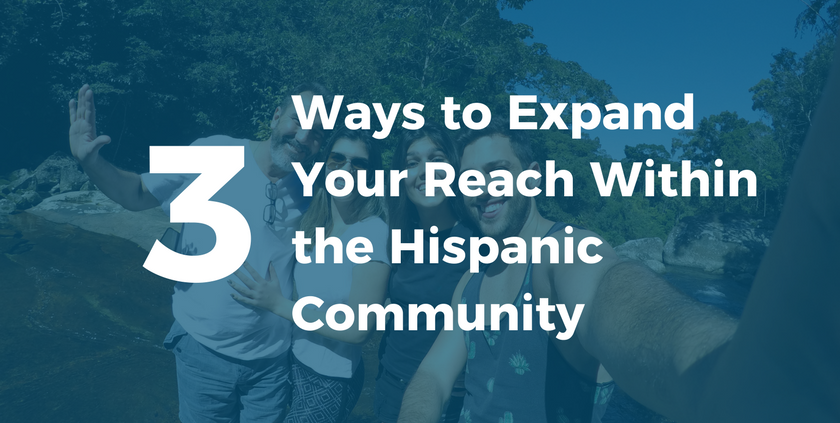Cision MediaRoom
This is a template for a simple marketing or informational website. It includes a large callout called a jumbotron and three supporting pieces of content. Use it as a starting point to create something more unique.
Articles

Hispanic Heritage Month brings awareness the importance of targeting the Hispanic population with relevant content in the language and application that maximizes reach. While many people who identify as Hispanic in the United States receive their news in English, that trend may be due to a lack of Spanish translations rather than a desire to consume news in English.
With a population of around 57 million within the U.S., the ever-growing Hispanic-American population is already one of the largest ethnic groups in the country. In addition to this, the term “Hispanic” incorporates a very large group of people with varying cultures and lifestyles, and it’s important to understand the individual, unique subgroups within the community as a whole. To play to the people and reach a larger range, it is vital to not only include Spanish translations in news distributions but also to understand the best methods to reach this unique population.
Without really understanding the needs of the audience — which news outlets they prefer, what makes them more inclined to read content from a company, what type of media generates the most interest — it’s impossible to customize and distribute content to the best audience. Here are three important angles to consider when aiming to maximize your reach to Hispanic people living in the U.S.
1. Use Mobile Destinations
While many people are accustomed to accessing their news either through television or by the newspaper, in the age of technology, it seems as though more people are starting to receive news throughout the day on their mobile phones. Internet access, as well as readily being able to pull out a cell phone at any time make it much easier to read news stories on the go.
According to a research study conducted by the Media Insight Project, started by the American Press Institute and the Associated Press-NORC Center for Public Affairs Research, up to 65 percent of Hispanics own smartphones and of this 65 percent, 78 percent access news through their mobile phones. These percentages come out to roughly 30 million people owning and using their cellular devices to view news throughout the day.
By targeting mobile destinations, your distribution is widened beyond the news someone can obtain through more traditional means.
2. Define Important Geographic Locations
Even something as simple as geographic location plays an essential role in the importance and relevance of sending press releases to certain areas, especially when considering the Hispanic community. This is largely because of the simple fact that different geographic regions have varying proportions of Spanish-speaking populations. For instance, big cities tend to have larger Hispanic communities, which affects the volume and type of media consumption.
According to a study examining the largest Hispanic TV markets in the United States, cities like Los Angeles and New York have 1.5-2 million households classified as Hispanic. This indicates there is value in targeting television stations in those areas as a meaningful method of ensuring your content is seen by your target audience.
Miami, Houston, and Dallas-Ft. Worth all have more than a half million households that identify as part of the Hispanic TV market, so a targeted approach would recommend content distribution in those areas as well. The obvious trend in these numbers shows that the geographic distribution, as well as the platform of sharing, are two factors that are key when planning how to reach the Hispanic community.
3. Find The Right Social Media Channel
The reach of social media, while already extensive, is one that continues to grow every day as new apps and platforms become available to users. With sites like Facebook, Twitter, Pinterest, Instagram and others, it’s not a shock that news spreads like wildfire from one side of the globe to the other. While all of this is widespread knowledge, what’s more interesting is that social media use actually varies significantly depending on the race and ethnicity of the user.
A recent study by Pew Research Center shows that a whopping 73 percent of Hispanics use Facebook as their main social media platform, while Instagram, Twitter, and Pinterest are used by less than a third of the population.
Undoubtedly, Facebook takes the cake as the most widespread and mainstream social media site among Hispanics, which makes it all the more important to target this site specifically. By making that one addition, you’ve now taken the steps to expand your release to roughly three-quarters of Hispanic internet users. And in doing so, not only have you enlarged your reach, but you’ve also brought your release to a platform where it can be easily shared by users and therefore, quickly amplified. And of course, including other sites like Instagram, Twitter, Pinterest, and LinkedIn in your distribution definitely widens your influence even further.
There are many factors that go into producing successful content that allows you to meet your campaign’s goals. Ensure you reach the right markets through research. Determine where the audience is located, how they prefer to receive their news and whether or not the news is easily accessible to them.
Even after identifying that you want to reach the Hispanic community, you should drill down further — are you looking to reach anyone who speaks Spanish? Or someone who identifies as Latino? Someone who is one specific nationality or any other number of individual characteristics? Use specific parameters to drive your choices for your content distribution.
It’s important to understand your goals to best meet them and get the greatest potential for earned media, engagement, or any other ROI for your efforts.
